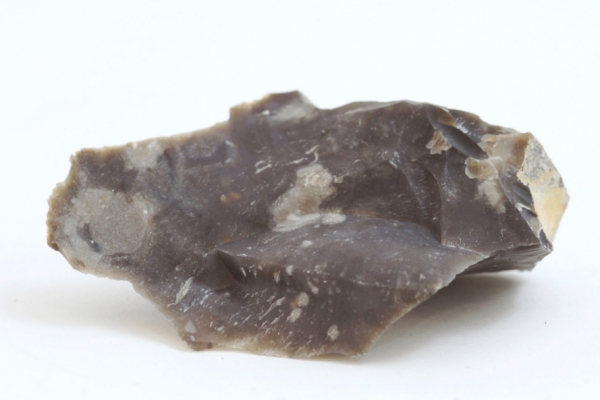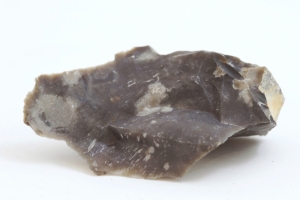
Flint is a glassy, waxy-looking sedimentary rock, which can be knapped into faceted shapes with very hard and sharp edges. It is one of the hardest naturally occurring materials and has an inner structure that is amorphous, similar to that of glass. Shaping flints by striking them with other rocks or tools (flint knapping) is quite a skill as there is no grain to the material and flakes of flint fracture off as a result of the shock waves that are caused by a strike. Some of the ripples of these waves are visible on the surface of flakes that fall away.
These flint shards have been flaked from a much larger piece; you can see the rind-like surface of the naturally occurring nodule from which they came. Flint nodules, along with great layers of flint, are found in between ancient layers of soft sedimentary rock like limestone or chalk. They are likely to have developed from the decomposed skeletons of billions of silica-based sea-creatures.
Knapped flints were among the first reliable tools made by humans for hunting, butchering and scraping animal hide, as well as a fire-making tool. Flint creates sparks when struck with a harder or equivalent material and if you have ever thrown rocks onto a pebble beach in the dark you may have seen this. It is worth noting that flints should not be used to line a fire pit, as the heat will make them explode into very sharp hot flying fragments.
Flint is still used as a tool to this day in eye-surgery as an ultra-thin and sharp knife, for it can be made more sterile than metal and incisions heal better due to fine nature of the blade it makes.
Sample ID: 798
Add materials you find interesting to your own selections.
Use the  button to select a material and get started.
button to select a material and get started.

